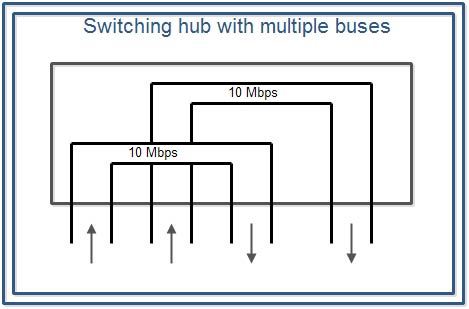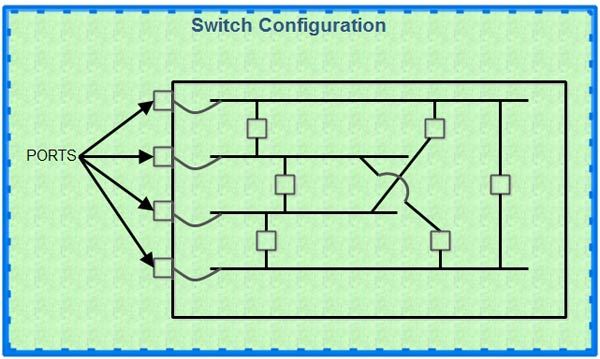A switch, which resembles a hub, is known as switching hub. But there is stark difference between hub and switching hub or a switch. Hub acts as a LAN concentrator, and repeater. It consists of a single box with multiple ports. Each port is connected with a separate computer. A signal transmitted by a computer travels to all ports like a bus topology.
With the evolution of bridge technology, a data packet input to one port is first checked for its destination and is outputted\accordingly to the respective port. In this manner multiple ports can communicate simultaneously with one another using switch. It can be said, in other words, that a switching hub has multiple buses for multiple LANs.


The switching hub interprets the MAC address of the destination computer contained in the data packet and sends the data packet to the appropriate destination computer using appropriate port when hub uses the technique of repeater in doing so. Therefore, switching hub is treated as bridge.
Characteristics of Switching Hub
- A switching hub can operate with multiple media (coaxial cable, UTP, and fiber)
- It can work with different technologies with different speeds
- It provides routing capabilities, too
- This is manageable via SNMP (Simple Network Management Protocol) or another appropriate network management protocol
- Switching hub provides an expanded bandwidth.
 Dinesh Thakur holds an B.C.A, MCDBA, MCSD certifications. Dinesh authors the hugely popular
Dinesh Thakur holds an B.C.A, MCDBA, MCSD certifications. Dinesh authors the hugely popular